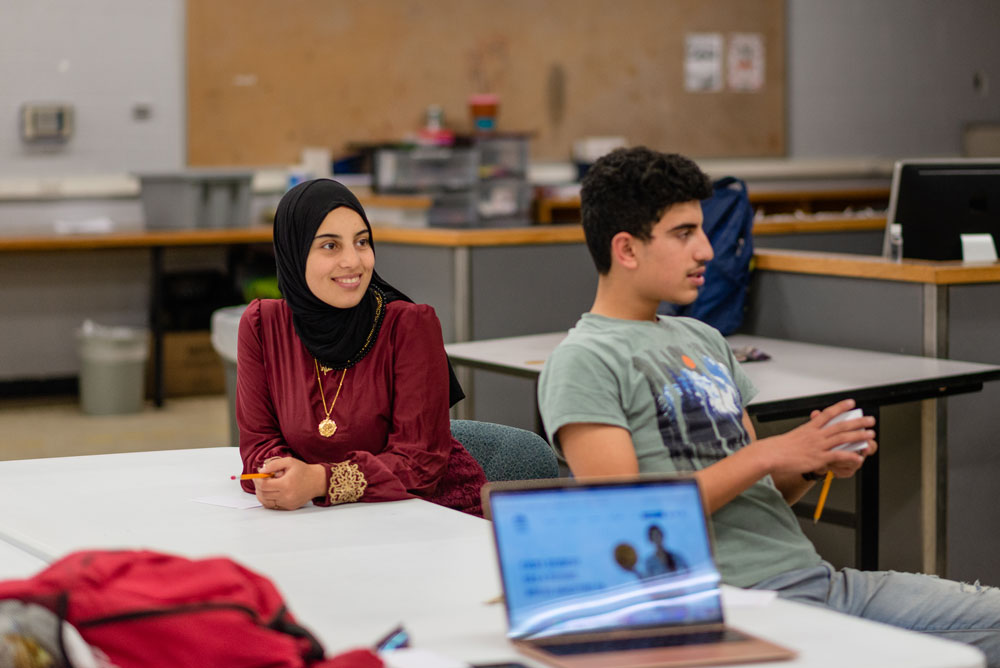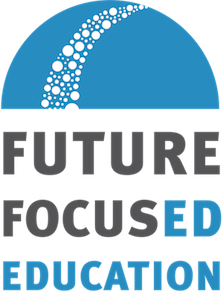What Are "Innovation Zones"?

"When students feel inspired to serve and better their communities, we create a reciprocal education system. Students are nurtured by the wisdom of their local community, and aspire to become problem solvers and innovators at home."
New Mexico students deserve more opportunities. Our youth are deeply talented and ambitious, but are underserved by an outdated, inequitable education system that has led to New Mexico having the highest rate in the country of 16-24 year old youth who are not working or in school.
We urgently need culturally-responsive, student centered ways of re-engaging students inside and outside the classroom and the Innovation Zone Initiative is where that work happens.
We can fight disengagement and low graduation rates by incorporating more rigorous, innovative practices. This Initiative was developed by the NM Public Education Department (“NM PED”) based on the 2022 New Mexico Comprehensive College and Career Pathways Assessment Report. It supports the integration of proven approaches like graduate profiles, capstones, high-quality Career Technical Education (CTE) through college and career pathways, work-based learning and personalized supports.
What are Innovation Zones?
The New Mexico Legislature and Governor Lujan Grisham have made great strides in increasing funding to transform our schools. The Innovation Zones Initiative is the culmination of those efforts and brings together innovative funding sources and program initiatives that are often not connected to each other.
Currently, eight school districts and two charter high schools serving more than 16,700 students are receiving between $150,000 to $750,000 to both braid and blend their existing initiatives and fund the growth of more opportunities for young people. The Innovation Zone participants are currently working together in a Community of Practice that has been in operation since 2020 with ongoing support from New Mexico-based technical assistance providers.
Our goal is to expand this opportunity to more schools and districts across our state so they can also integrate the following evidence-based practices that are increasing graduation rates and attendance and student engagement across New Mexico
The 4 Components of Innovation Zones
- Rigorous and Relevant Curriculum and Instruction
Work-based learning opportunities like internships put high school students in real-world work environments in partnership with communities. This is a proven economic development tool that solidifies pathways toward high school graduation and career-connected work opportunities.
Encouraging high-quality, culturally-responsive instruction, and core academics integrated with challenging Career Technical Education boosts student engagement. By providing purposeful dual credit opportunities that are equitably accessible, students are immersed and empowered to push themselves to what they are capable of.
"I really love my internship because I get to be outside all the time, be involved with my community, and I've learned a lot of good community skills and also, hiking skills and hiking safety skills."
- Sarah, X3 Intern at Friends of Organ Mountains.
- Graduate Profiles and Capstone Projects
Graduate profiles outline the knowledge, skills, and dispositions that a local community identifies as important for their graduates. This includes competencies beyond traditional academics, such as employability and social-emotional skills that honor students’ cultural and linguistic identities.
Capstone projects both engage student passions and measure competency in the “transferable skills” that the economy demands, such as teamwork, effective communication, problem solving, and critical thinking. Capstone projects are an excellent way for students to learn these “real world” skills that can then be applied to future endeavors.
"I feel like my capstone was probably one of the most engaging experiences I've had in high school, or in school in general, especially being given the opportunity to express my creative ideas in an environment where everyone has an
open mind."
- Lakin Epaloose, Zuni High School
- Personalized Supports and Leadership
Students need a system of robust, personalized support with an attention to college and career advising and accelerated instruction in reading, writing, and mathematics. Centering youth leadership and voice helps encourage students to be able to advocate for themselves and feel confident in their skills. By supporting culturally- and linguistically-responsive programs and services we can prepare all students to be college and career-ready.
"I had started to feel like I was letting go of my culture, which subsequently brought on some depression. The terminology I was learning in my mental health class helped me to reflect on the cultural meaning of 'coming home.' And then I realized I can always revisit our capstone for personal and cultural affirmation..This experience grounded me in myself, my confidence, my culture and most of all, my Zuni core values."
- Mariah, Zuni High School
- Community Schools Model
The last component is providing a framework for implementing the Community Schools Model in high schools. This model allows schools to partner with families and the community (including Tribal partners, nonprofit community-based organizations, and local businesses) to provide well-rounded educational opportunities and supports for student success.
"I was thinking I would just be a waitress, but this has helped me realize that maybe I could get a job at the City, go back to school. I can think more long term."
- Amarisa, X3 Intern at the City of Albuquerque Office of Equity Inclusion.
What are the plans?
Expanding CTE
This funding would enable currently-funded programs to do more and allow more districts and charter schools to benefit from this important program. It would also enable Bureau of Indian Education-funded high schools to participate (consistent with the federal Carl Perkins Act).
Scaling Innovation Zones
This would enable eight additional school districts and two additional charter high schools to participate in the NM PED Innovation Zones Initiative and would fund the existing ten Innovation Zones for a second year. This Initiative supports the integration of proven strategies like graduate profiles, integrated college and career pathways, WBL, personalized supports and capstone projects.
Increasing Work-Based Learning
Data shows that when we connect young people to paid internships with local employers, they have more access to important career connections and professional networks. These funds will help build a statewide WBL support system and allow about 190 high schools to offer WBL opportunities to their students.
Providing Professional Development
High school counselors, WBL coordinators, and other college and career support professionals play a critical yet underappreciated role in assisting students with successfully planning for and transitioning to college and careers. This funding will provide these professionals with cross-training, exposure, and support to guide students to college and career success.
When students feel inspired to serve and better their communities, we create a reciprocal education system. Students are nurtured by the wisdom of their local community, and aspire to become problem solvers and innovators at home.

